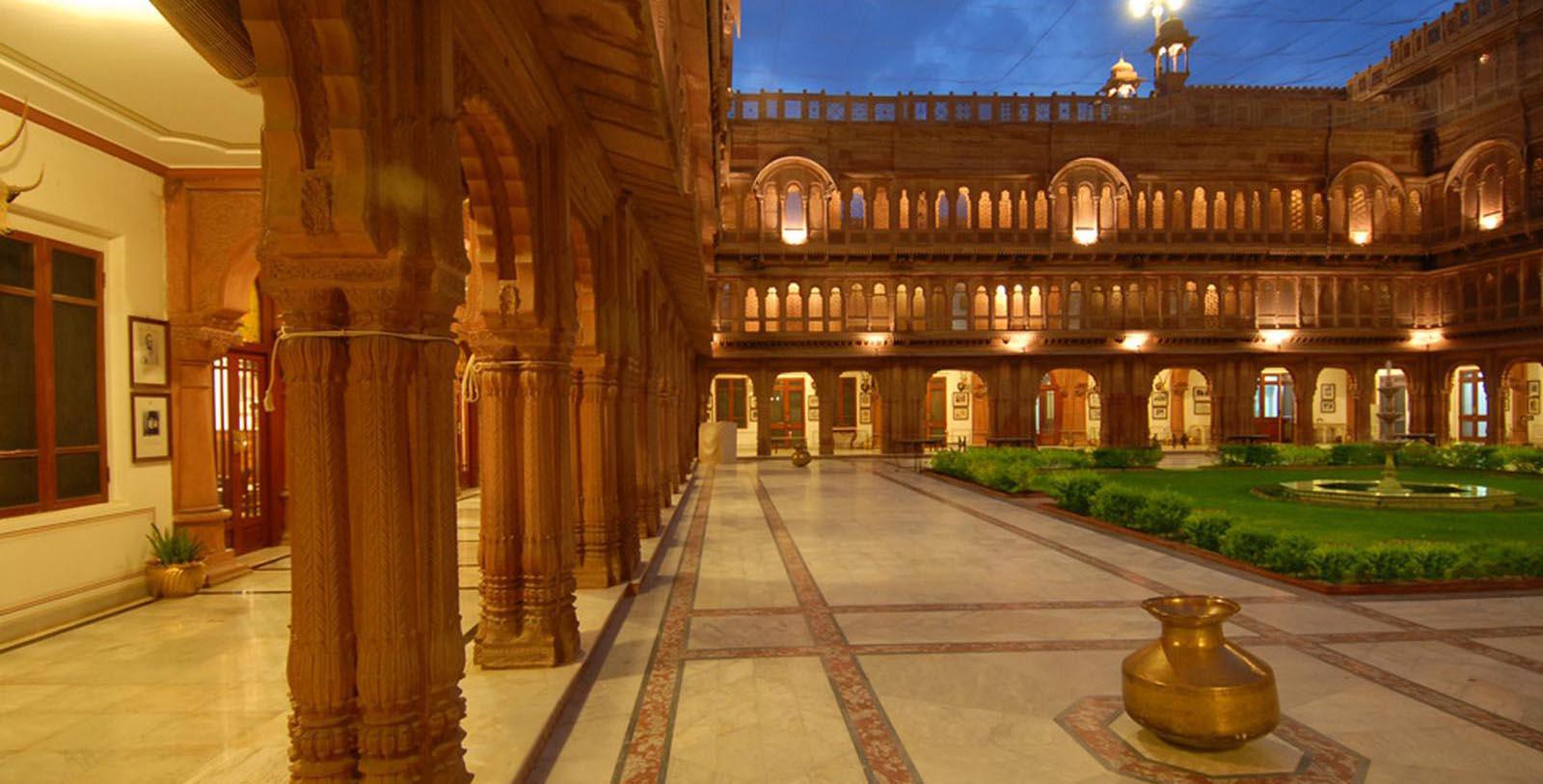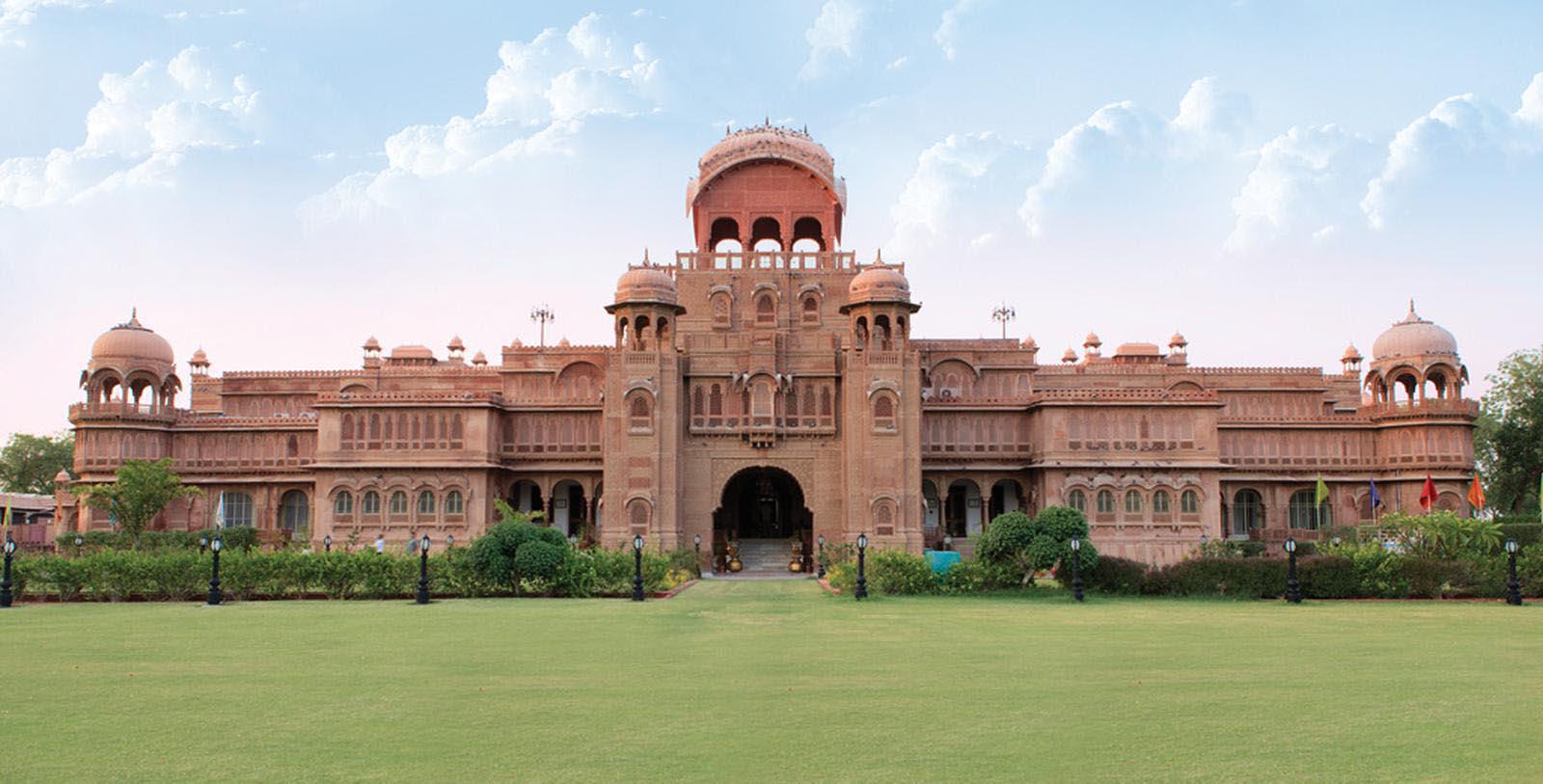Receive for Free - Discover & Explore eNewsletter monthly with advance notice of special offers, packages, and insider savings from 10% - 30% off Best Available Rates at selected hotels.
history
Discover Laxmi Niwas Palace, which was commissioned by Maharajah Sir Ganga Singh to serve as his royal residence.
Laxmi Niwas Palace was constructed in the years leading up to World War I, which was an era defined by its economic prosperity, artistic expression, and political intrigue.
Built between 1898 and 1902, Laxmi Niwas Palace was commissioned by Maharajah Sir Ganga Singh to serve as his royal residence. Designed by Sir Samuel Swinton Jacob, Laxmi Niwas Palace is constructed in an Indo-Saracenic style that was popular in 19th-century India. The magnificent palace was named after Laxmi, the Hindu Goddess of wealth, prosperity, and beauty. As the consort of Narayana, Laxmi represents the good luck and fortune that radiates through the halls of the palace. Upon its completion, plans were made to expand the estate into the much larger Lalgarh Palace, which is presently comprised of several palace houses.
Used exclusively as the private residence for the Royal family and their guests, Laxmi Niwas Palace commanded over Bikaner in all its opulence. With a flair for hospitality, the Maharajah hosted numerous luminaries and dignitaries, including King George V and Queen Mary, the King of Greece, viceroys, fellow Maharajahs, and renowned statesmen. At the turn of the 21st century, Laxmi Niwas Palace was converted into a magnificent luxury hotel, which celebrates its significant heritage with thoughtfully-preserved historic elements.
-
About the Architecture +
The palace was constructed using pink sandstone, brought from the stone quarries of Dulmera. This stone was known for boasting a brilliant palate to complement the intricate symmetrical structural design of the intended palace. Sir Samuel Swinton Jacob defined the building’s exterior with canopied balconies that were adorned with intricate filigree. Inside, visitors could find carved friezes, ornate ceilings, and golden frescoes. The grounds were replete with marble courtyards, and colonnaded corridors of stone lattice work. As such, Sir Jacob did an outstanding job of turning Maharajah Sir Ganga Singh’s artistic vision into a reality.
-
Famous Historic Guests +
King George V of the United Kingdom (1910 - 1936)


























